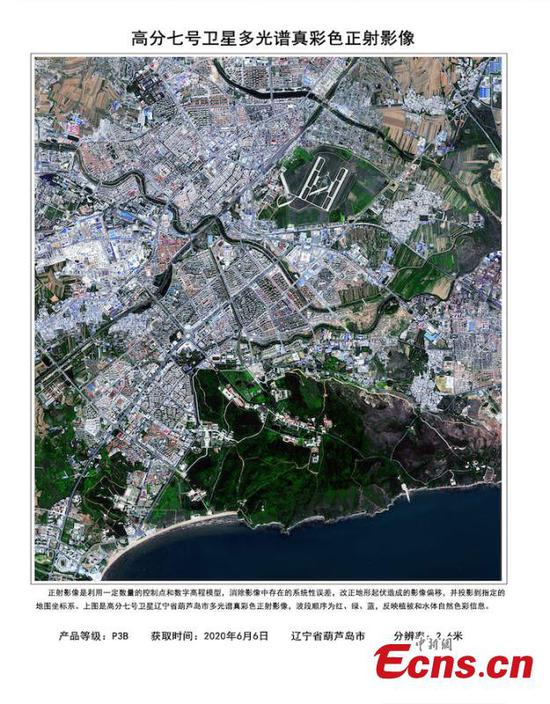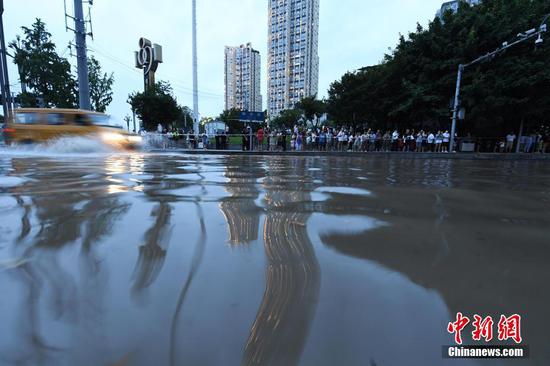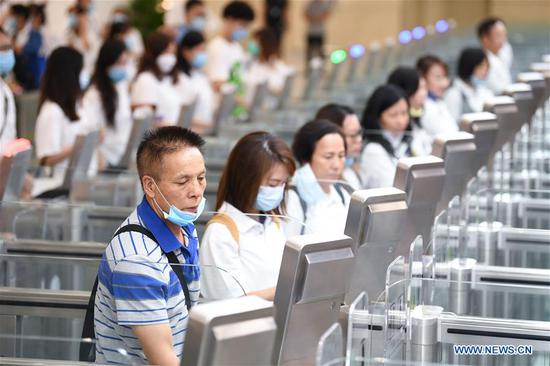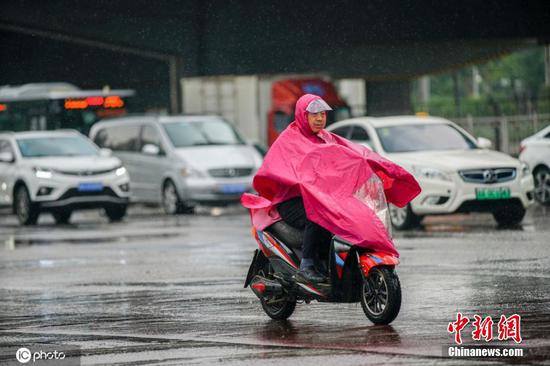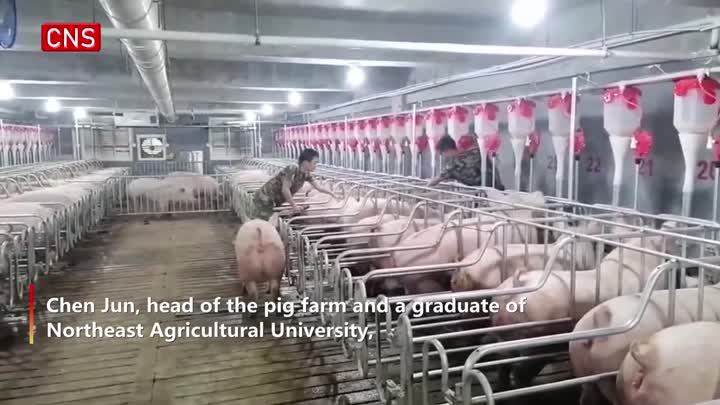
People have dinner at restaurants in Washington, D.C., the United States, Aug. 7, 2020. (Xinhua/Liu Jie)
The number of initial jobless claims in the United States rose back above the 1 million mark last week, casting shadow on the recovery of a labor market ravaged by the COVID-19 crisis.
In the week ending Aug. 15, the number of Americans filing for unemployment benefits increased by 135,000 to reach 1.1 million, the Labor Department said in a report on Thursday.
"Initial jobless claims unexpectedly rose to 1.1M as the labor market's recovery remains precarious," Sarah House, senior economist at Wells Fargo Securities, wrote in an analysis.
As COVID-19 shutdowns rippled through the workforce, initial jobless claims spiked by 3 million to reach a record 3.3 million in the week ending March 21, and then doubled to reach a record 6.87 million in the week ending March 28.
After that, the number had been declining for 15 weeks consecutively -- though they were still at historically high levels -- before the trend was reversed in the week ending July 18 amid a resurgence in COVID-19 cases.
The number then fell to 963,000 in the week ending Aug. 8, the first time it has dipped below 1 million since mid-March, but the trend was reversed again last week, another setback for the struggling job market.
With the latest numbers, a staggering 57 million initial jobless claims have been filed over the past 22 weeks, indicating a mounting economic fallout related to the pandemic.
"Improvements over recent weeks encouraging, but levels still concerning," Gregory Daco, chief U.S. economist at Oxford Economics, said on Twitter. "Every week for the past 5 months, new claims for unemployment benefits have surpassed the worst week of the 2008-09 GFC (Global Financial Crisis)."
An extra 600 U.S. dollars in weekly unemployment benefits expired at the end of July, but Democratic lawmakers and the Trump administration remain deadlocked over the next COVID-19 relief package, with both sides blaming each other for making little progress.
As negotiations stall, President Donald Trump signed a series of executive orders to extend certain COVID-19 economic relief, but analysts believe that they are unlikely to provide a meaningful boost to the overall economy.
One of the actions will extend extra unemployment benefits through the end of the year at a reduced level of 400 U.S. dollars per week, instead of the 600 dollars approved by Congress in late March. The new order also demands states cover 25 percent of the 400-dollar weekly benefits, but only a handful of states have approved the funding.
The total number of confirmed COVID-19 cases in the United States totaled over 5.56 million on Thursday, with a death toll over 173,000, according to a tally by Johns Hopkins University. Recent resurgence of COVID-19 cases, which has hindered some states' reopening efforts, could undermine the prospect of economic recovery.
According to the minutes of the U.S. Federal Reserve's latest policy meeting released Wednesday, Fed officials believed that uncertainty surrounding the economic outlook remained "very elevated," with the path of the economy highly dependent on the course of the virus.
"Several risks to the outlook were noted, including the possibility that additional waves of virus outbreaks could result in extended economic disruptions and a protracted period of reduced economic activity," said the minutes of the Fed's meeting held on July 28-29.
The minutes highlighted the need for a new round of fiscal relief, noting that "additional fiscal aid would likely be important for supporting vulnerable families, and thus the economy more broadly, in the period ahead."
The Labor Department's jobless claims report also showed that claims under the Pandemic Unemployment Assistance, a federal program, totaled 542,797 in the week ending Aug. 15, an increase of 53,158 from the previous week. The program covers independent contractors or the self-employed, who are not eligible for regular state programs.
As a silver lining in the cloud, the number of people continuing to collect state unemployment benefits declined by 636,000 to 14.8 million in the week ending Aug. 8. The total number of people claiming benefits in all programs for the week ending Aug. 1 also declined 197,601 to 28 million.
"Delayed and reduced supplemental payments cloud the spending outlook with 28M continuing claims across programs," House said.
Earlier data showed that U.S. employers added 1.8 million jobs in July, and the unemployment rate dropped to 10.2 percent amid reopening efforts. Despite the rebound in May, June and July, nonfarm payrolls have yet to recover even half of the jobs lost since February, remaining 12.9 million below pre-pandemic levels.
"With (jobless) claims still hovering around one million, the jobs recovery still has a long ways to go," House said. Enditem










